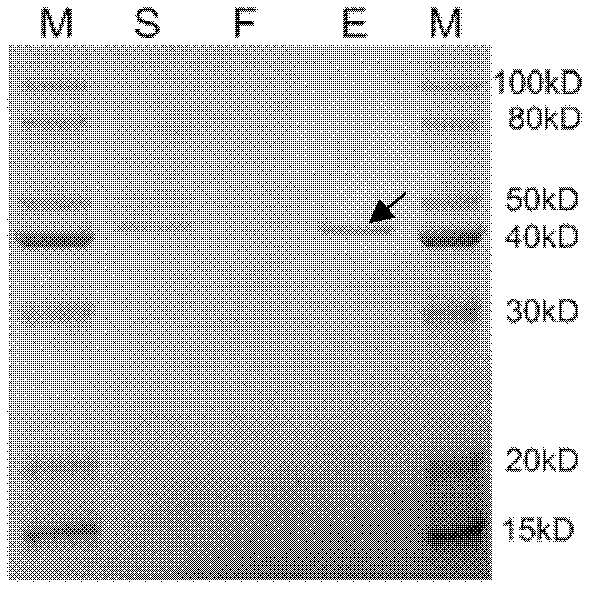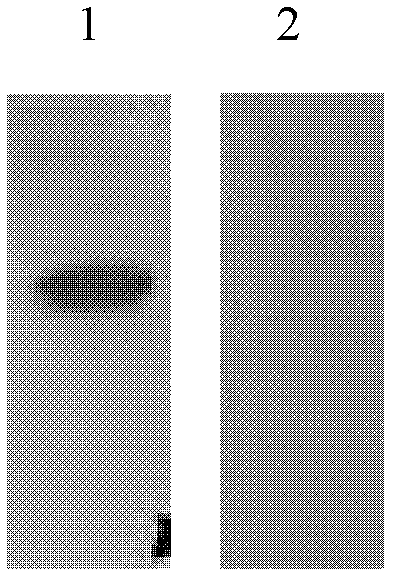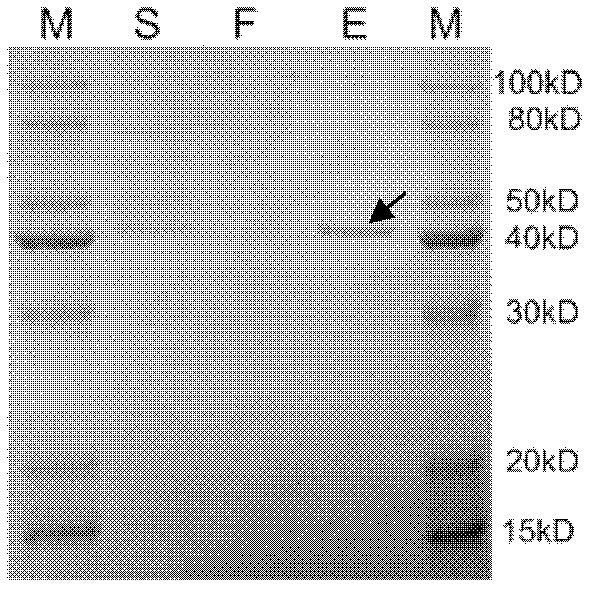Method of using pichia yeast expression system to produce German cockroach allergenic Blagarg protein
A German cockroach and expression system technology, applied in the field of genetic engineering, can solve the problems of high cost of insect expression system, limited application, unsuitable for large-scale fermentation production, etc., and achieve the effect of high specific IgE binding activity
- Summary
- Abstract
- Description
- Claims
- Application Information
AI Technical Summary
Problems solved by technology
Method used
Image
Examples
Embodiment 1
[0022] Example 1: Extraction of total RNA from Periplaneta germanium.
[0023] Frozen German cockroaches (from Jiangsu Provincial Center for Disease Control) were taken and ground in liquid nitrogen, and Trizol reagent was added according to 100 mg / mL Trizol reagent. The total RNA of German cockroach was extracted.
Embodiment 2
[0024] Example 2: The gene of the German cockroach allergen Blagarg was amplified by PCR and cloned.
[0025] The extracted total RNA was reverse transcribed into cDNA. The primers 5'-ATGGTGGATGCCGCAGTTCT-3' and 5'-CAGGGAGCTCTCAATCTTGAT-3' were designed according to the gene sequence of the German cockroach allergen Blagarg registered in genbank. After pre-denaturation at 94°C for 10 minutes, 94°C for 30 seconds, and 50°C for 45 seconds , 72°C for 1 minute for a total of 35 cycles) to amplify the Blagarg gene, clone it into the pMD18-T vector, and transform it into E. coli JM109 competent cells. Plates were incubated overnight. The positive bacteria were screened, plasmids were extracted and identified by PCR and sequencing. The German cockroach allergen Blagarg gene was obtained, and its nucleotide sequence is shown in SEQ ID No: 1.
Embodiment 3
[0026] Example 3: Construction of the Blagarg expression plasmid for the German cockroach allergen.
[0027] The obtained Blagarg gene was cloned into plasmid pGAPaA through XhoI and Not I restriction sites, and transformed into competent JM109. Positive clones were screened.
PUM
 Login to View More
Login to View More Abstract
Description
Claims
Application Information
 Login to View More
Login to View More - R&D
- Intellectual Property
- Life Sciences
- Materials
- Tech Scout
- Unparalleled Data Quality
- Higher Quality Content
- 60% Fewer Hallucinations
Browse by: Latest US Patents, China's latest patents, Technical Efficacy Thesaurus, Application Domain, Technology Topic, Popular Technical Reports.
© 2025 PatSnap. All rights reserved.Legal|Privacy policy|Modern Slavery Act Transparency Statement|Sitemap|About US| Contact US: help@patsnap.com



